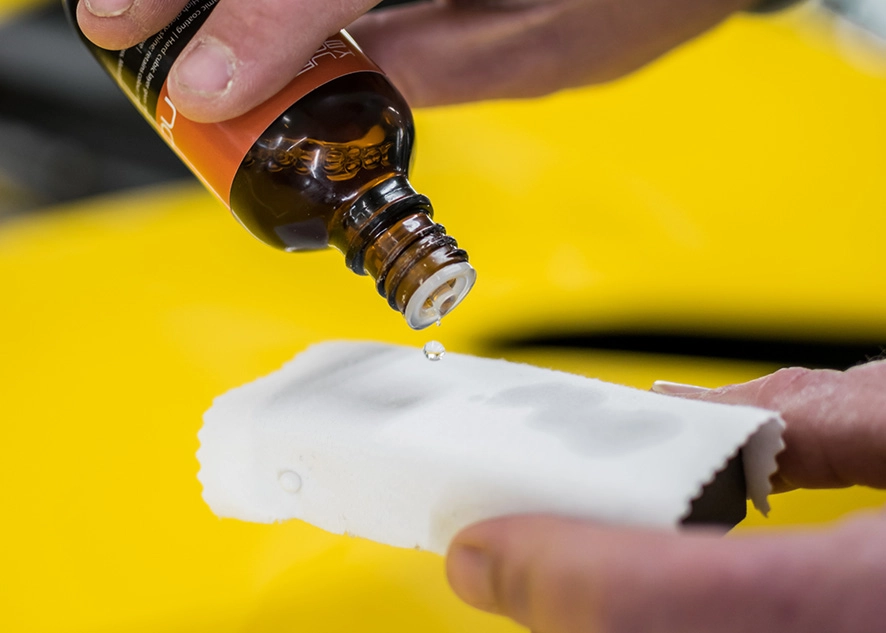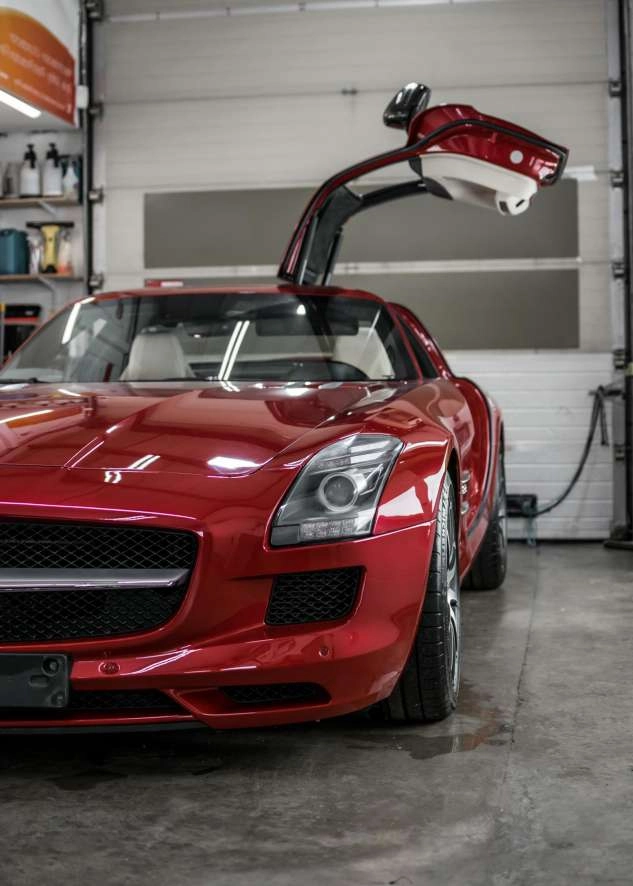What is Ceramic Coating?
Simply put, it is a liquid polymer applied to a car's exterior surface, which bonds chemically with the factory paint to provide a layer of protection. Unlike traditional waxes or sealants, ceramic coatings form a semi-permanent bond with the vehicle’s paint, meaning it won’t wash off or break down over a short period. This layer acts as a shield against various external elements, enhancing the longevity and appearance of your vehicle's finish.
How Ceramic Coating Works
Ceramic coatings, also known as ceramic car coatings, are composed primarily of silicon dioxide (SiO2), often combined with other compounds to enhance durability and gloss. When applied, the coating fills the microscopic imperfections in the paint surface, creating a hydrophobic (water-repelling) layer. This prevents dirt, grime, and water from clinging to the surface and makes cleaning easier.
The protective layer offered by a ceramic coating is highly resistant to environmental damage such as bird droppings, UV rays, acid rain, and minor scratches. It creates a barrier that resists chemical contaminants and keeps your vehicle looking glossy and pristine.

Benefits of Car Ceramic Coating
- Protection Against Environmental Damage: Car ceramic coating offers robust protection against harmful UV rays that can cause fading and oxidation. It also protects against chemicals, bird droppings, and other contaminants.
- Hydrophobic Properties: One of the most popular features is its ability to repel water. The hydrophobic effect causes water to bead and roll off the surface, making cleaning your car much easier.
- Scratch Resistance: While not entirely scratch-proof, the ceramic paint protection layer can reduce the likelihood of surface scratches and swirl marks.
- Enhanced Gloss and Shine: Ceramic coatings provide a deep, reflective gloss that enhances your car's appearance, making it look as if it just rolled out of the showroom.
The Process of Applying Ceramic Coating
Applying ceramic car coating requires precision and preparation. Here's a brief overview of the steps involved:
- Thorough Cleaning: The vehicle undergoes a meticulous wash to remove any dirt, grease, and contaminants.
- Paint Correction: Any existing imperfections, scratches, or swirl marks in the paint are corrected to ensure a flawless finish.
- Degreasing: The surface is then degreased to remove any residual oils, ensuring optimal bonding of the coating.
- Application: The ceramic coating is carefully applied in layers, allowing for proper bonding and curing.
- Curing Time: After application, the coating needs time to cure. This varies based on environmental factors and product specifics.

Comparison with Other Protection Methods
Ceramic coatings provide superior protection compared to waxes and polymer sealants, which tend to degrade quickly. Unlike wax, a car ceramic coating can last several years with proper care. While paint protection films (PPF) offer physical protection against chips and scratches, they are more expensive and often less aesthetically appealing due to potential visible edges.
Caring for Your Coated Vehicle
Proper maintenance ensures the longevity of the ceramic paint protection. Hand washing is recommended to preserve the coating's hydrophobic properties. Avoid using harsh detergents or automatic car washes, as these may reduce the coating’s effectiveness. Periodic re-application of booster products can help maintain the glossy finish and durability.
Cost and Longevity of Ceramic Coatings
The cost of ceramic car coating varies based on factors such as vehicle size, paint condition, and chosen coating brand. While it might appear as a significant upfront investment, the cost-effectiveness becomes evident over time due to reduced maintenance needs and extended paint life.

When to Choose Ceramic Coating
Ceramic coatings are suitable for new and older vehicles alike. For those looking to protect and maintain their car's finish, enhance its shine, and reduce cleaning efforts, it’s an ideal solution. Drivers who frequently expose their vehicles to harsh conditions may particularly benefit from this durable protection.
Frequently Asked Questions
- Can ceramic coating be applied by oneself? Yes, but professional application is recommended for optimal results.
- Is ceramic coating suitable for all paint types? Generally, yes, but it’s best to consult a professional for compatibility.
- Are there restrictions after application? Avoid washing your vehicle or exposing it to water for at least 24-48 hours post-application to allow curing.
Conclusion
In summary, investing in a ceramic car coating provides lasting protection and a showroom-like shine that is unmatched by traditional waxes and sealants. While it requires an upfront investment and care, the benefits of superior protection, reduced maintenance, and enhanced aesthetics make it a valuable addition to any vehicle.
